nginx current limiting and configuration management methods
nginx current limit
http {
limit_conn_zone $binary_remote_addr zone=addr:10m;
//$binary_remote_addr 表示通过remote_addr这个标识来做限制
//zone=addr:10m 表示生成一个大小为10M,名字为addr的内存区域
...
server {
location /download/ {
limit_conn addr 1; #限制并发数
limit_rate 50k; #限制带宽
}
}
Limit the number of concurrent connections
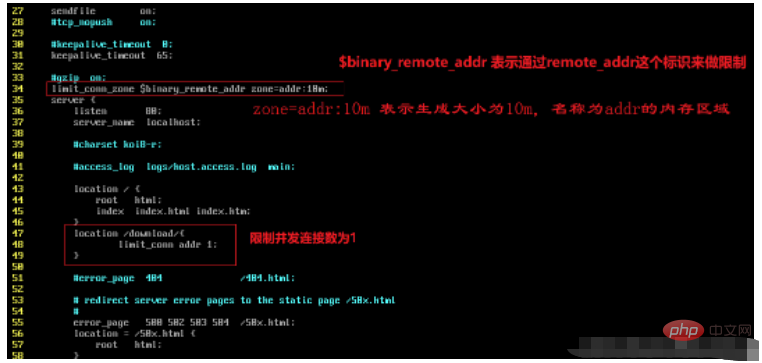
$binary_remote_addr: Indicates restriction through the remote_addr flag. The purpose of "binary_" is to abbreviate the memory usage and limit the same client IP address.
zone=addr:10m: Indicates generating a file with a size of 10M, a memory area named addr, used to store access frequency information

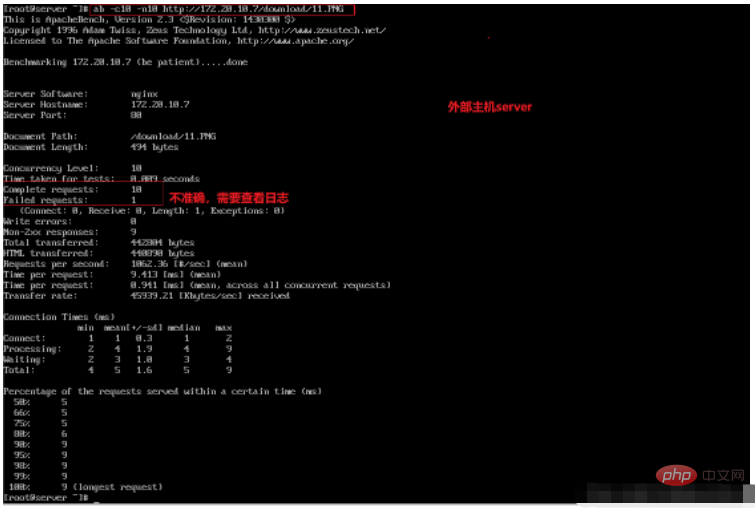

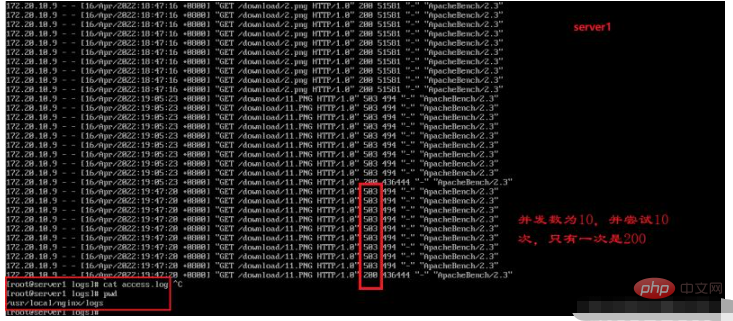
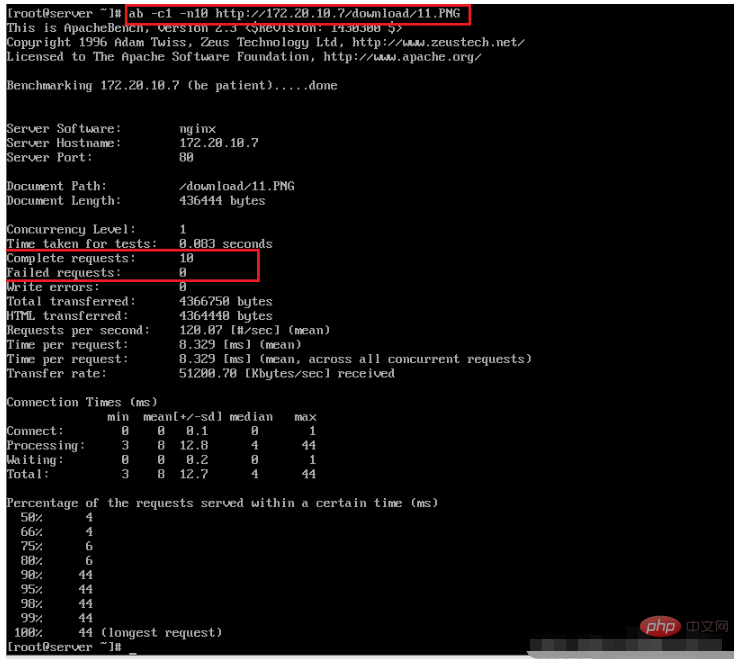
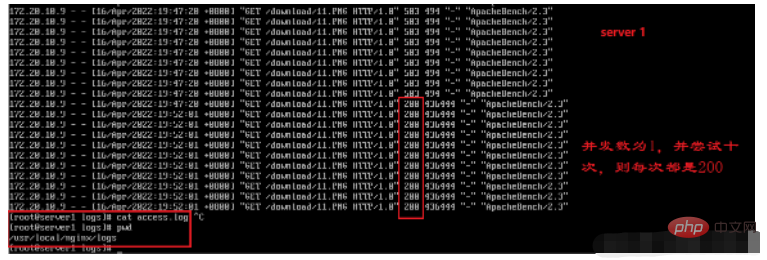
#http status code
400-499 is used to indicate Client error. 500-599 is used to support server errors.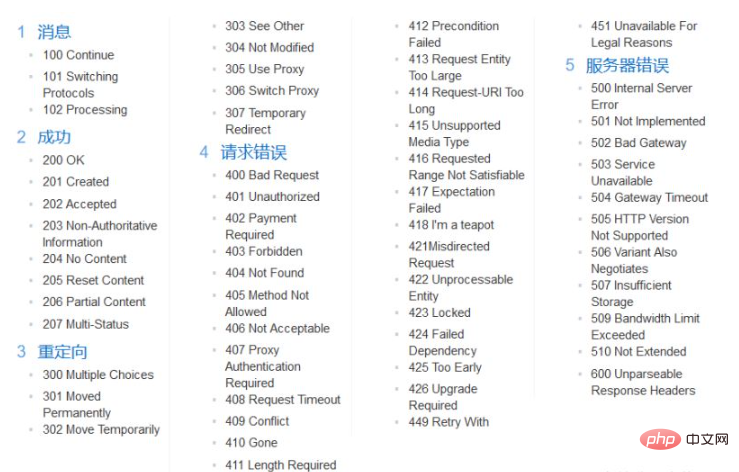
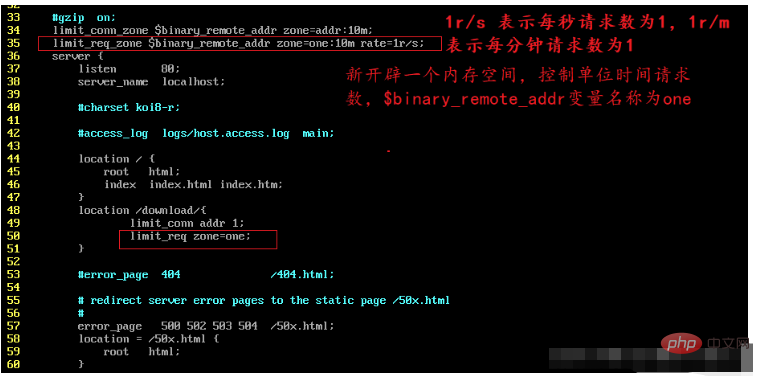
rate=1r/s: indicates that the same ID is allowed The client's access frequency is limited to 1 time per second, that is, only one request is processed per second. It can also be 30r/m, which is limited to one access every 2 seconds, that is, only one request is processed every 2 seconds.

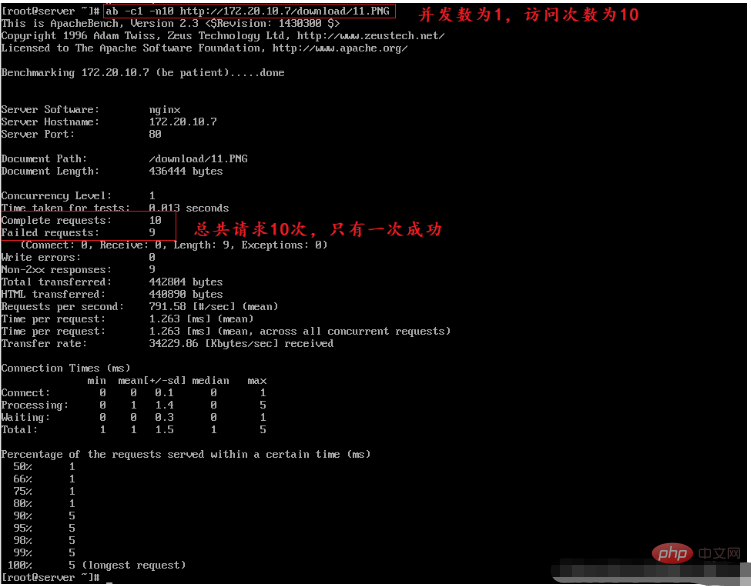
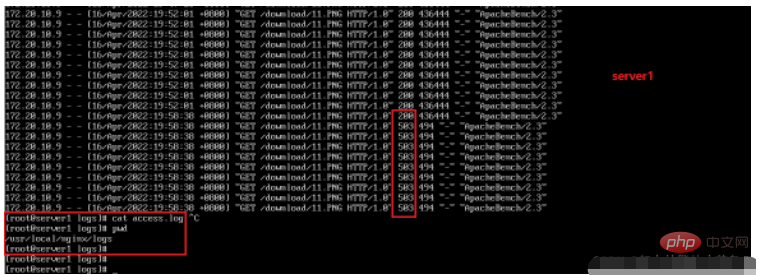 ##burst
##burst

When a large number of requests (burst) come, requests that exceed the access frequency limit can be processed first Put it in this buffer and wait, but there are only 5 positions in this waiting area. Requests that exceed the limit will directly report a 503 error and return.


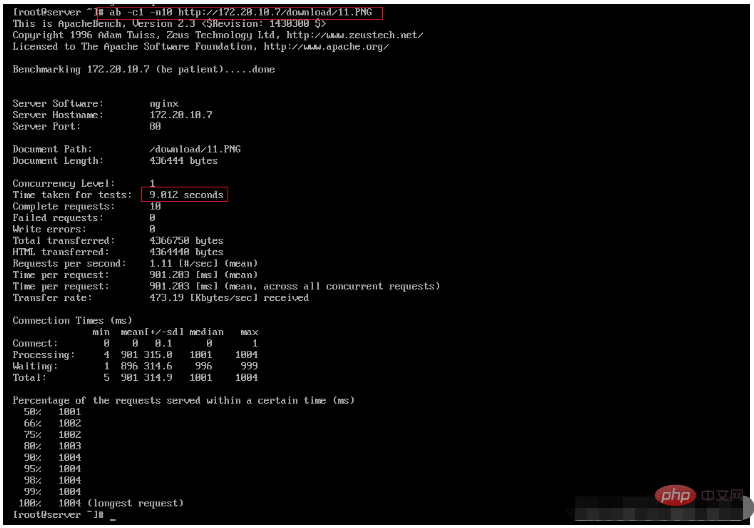
#nodelay
If not set, all requests will be queued in sequence.
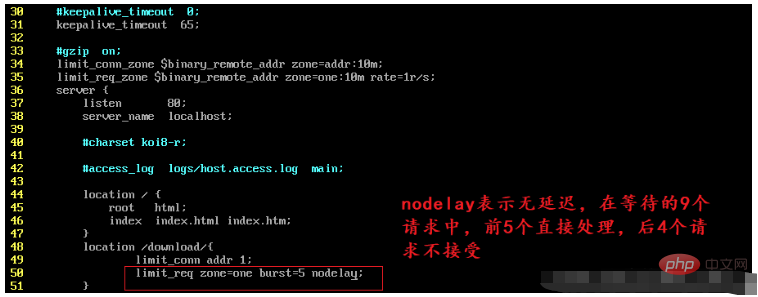

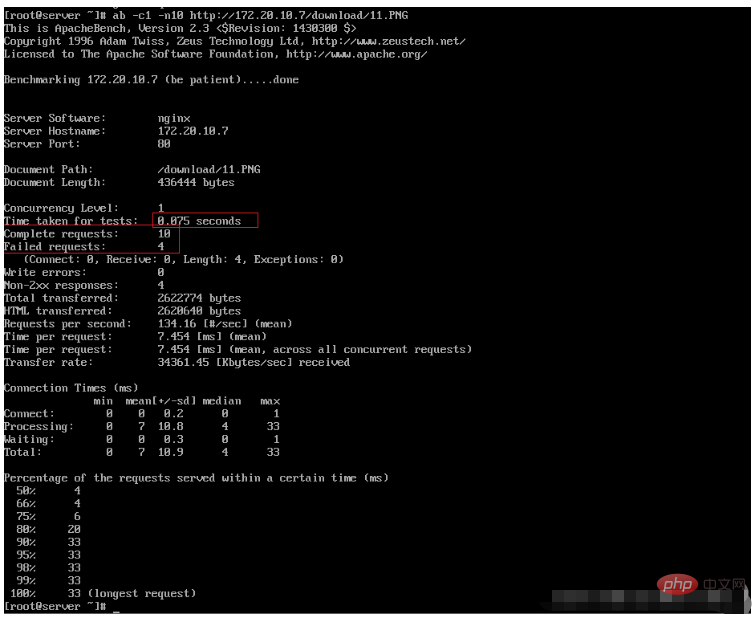
limit_rate limit bandwidth
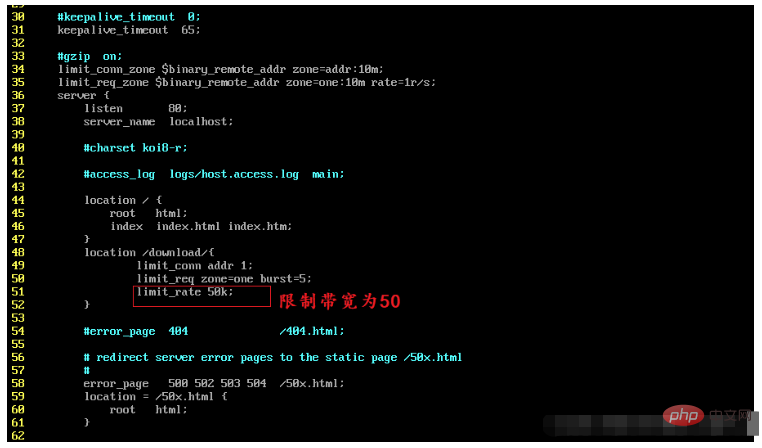

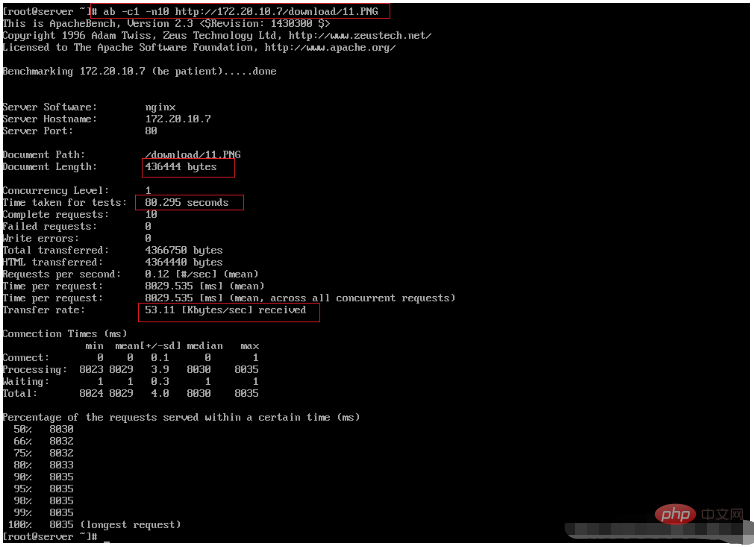 ##
##
nginx configuration management
Automatic index
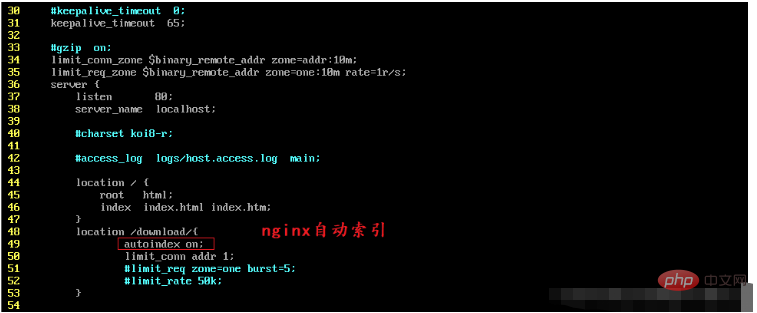


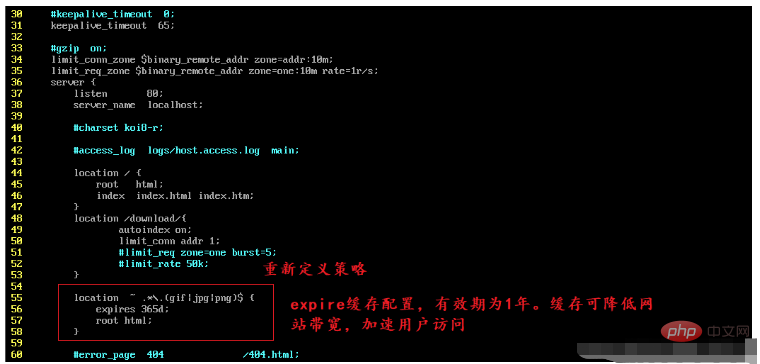


~ means to perform a regular match, which is case-sensitive
~* means to perform a regular match, which is not case-sensitivelocation expression priority^~ means to match ordinary characters. Prefix matching is preferred. If the match is successful, no other locations will be matched.
= performs exact matching of common characters. That is an exact match.
@ "@" defines a named location, used when internally directed, such as error_page, try_files
/: universal matching, if there is no other match, any request will be matched;
location = > location full path> location ^~ path> location ~ ,~* regular sequence> location partial starting path (prefix matching ) > /
Log polling




##For security reasons, the log directory does not need to give you nginx user access rights. Set # chmod -R 700 /usr/local/nginx/logs




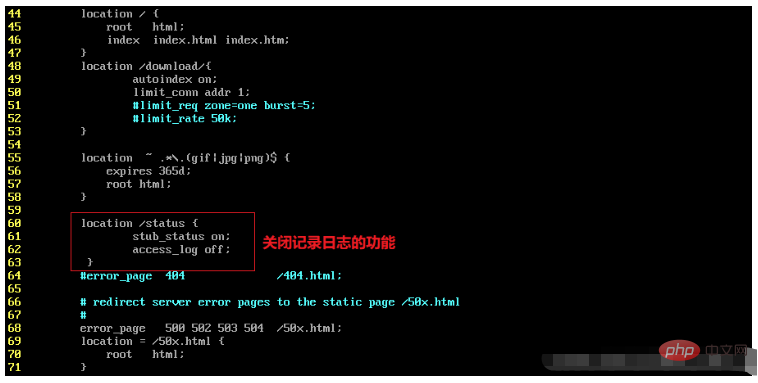

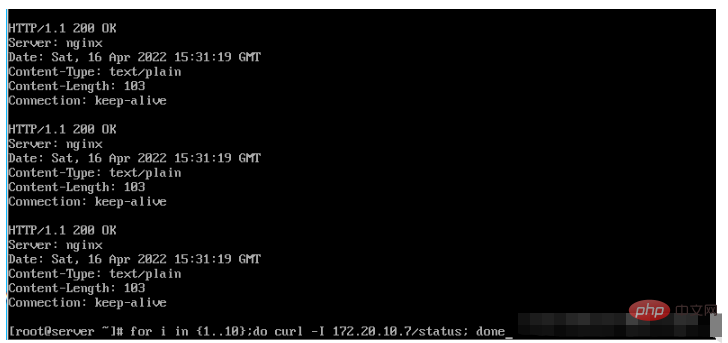


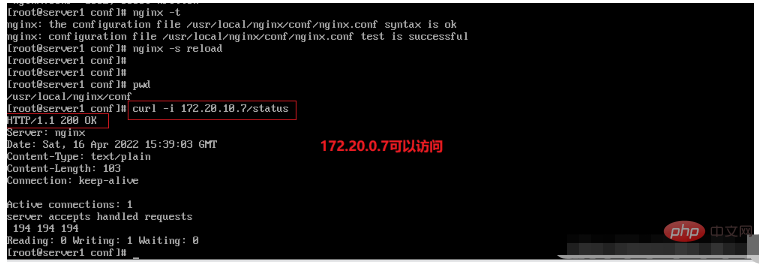
 Set charset utf-8;
Set charset utf-8;
The above is the detailed content of nginx current limiting and configuration management methods. For more information, please follow other related articles on the PHP Chinese website!

Hot AI Tools

Undresser.AI Undress
AI-powered app for creating realistic nude photos

AI Clothes Remover
Online AI tool for removing clothes from photos.

Undress AI Tool
Undress images for free

Clothoff.io
AI clothes remover

Video Face Swap
Swap faces in any video effortlessly with our completely free AI face swap tool!

Hot Article

Hot Tools

Notepad++7.3.1
Easy-to-use and free code editor

SublimeText3 Chinese version
Chinese version, very easy to use

Zend Studio 13.0.1
Powerful PHP integrated development environment

Dreamweaver CS6
Visual web development tools

SublimeText3 Mac version
God-level code editing software (SublimeText3)

Hot Topics
 1386
1386
 52
52
 How to configure cloud server domain name in nginx
Apr 14, 2025 pm 12:18 PM
How to configure cloud server domain name in nginx
Apr 14, 2025 pm 12:18 PM
How to configure an Nginx domain name on a cloud server: Create an A record pointing to the public IP address of the cloud server. Add virtual host blocks in the Nginx configuration file, specifying the listening port, domain name, and website root directory. Restart Nginx to apply the changes. Access the domain name test configuration. Other notes: Install the SSL certificate to enable HTTPS, ensure that the firewall allows port 80 traffic, and wait for DNS resolution to take effect.
 How to check nginx version
Apr 14, 2025 am 11:57 AM
How to check nginx version
Apr 14, 2025 am 11:57 AM
The methods that can query the Nginx version are: use the nginx -v command; view the version directive in the nginx.conf file; open the Nginx error page and view the page title.
 How to start nginx server
Apr 14, 2025 pm 12:27 PM
How to start nginx server
Apr 14, 2025 pm 12:27 PM
Starting an Nginx server requires different steps according to different operating systems: Linux/Unix system: Install the Nginx package (for example, using apt-get or yum). Use systemctl to start an Nginx service (for example, sudo systemctl start nginx). Windows system: Download and install Windows binary files. Start Nginx using the nginx.exe executable (for example, nginx.exe -c conf\nginx.conf). No matter which operating system you use, you can access the server IP
 How to check the name of the docker container
Apr 15, 2025 pm 12:21 PM
How to check the name of the docker container
Apr 15, 2025 pm 12:21 PM
You can query the Docker container name by following the steps: List all containers (docker ps). Filter the container list (using the grep command). Gets the container name (located in the "NAMES" column).
 How to check whether nginx is started
Apr 14, 2025 pm 01:03 PM
How to check whether nginx is started
Apr 14, 2025 pm 01:03 PM
How to confirm whether Nginx is started: 1. Use the command line: systemctl status nginx (Linux/Unix), netstat -ano | findstr 80 (Windows); 2. Check whether port 80 is open; 3. Check the Nginx startup message in the system log; 4. Use third-party tools, such as Nagios, Zabbix, and Icinga.
 How to run nginx apache
Apr 14, 2025 pm 12:33 PM
How to run nginx apache
Apr 14, 2025 pm 12:33 PM
To get Nginx to run Apache, you need to: 1. Install Nginx and Apache; 2. Configure the Nginx agent; 3. Start Nginx and Apache; 4. Test the configuration to ensure that you can see Apache content after accessing the domain name. In addition, you need to pay attention to other matters such as port number matching, virtual host configuration, and SSL/TLS settings.
 How to create a mirror in docker
Apr 15, 2025 am 11:27 AM
How to create a mirror in docker
Apr 15, 2025 am 11:27 AM
Steps to create a Docker image: Write a Dockerfile that contains the build instructions. Build the image in the terminal, using the docker build command. Tag the image and assign names and tags using the docker tag command.
 How to start containers by docker
Apr 15, 2025 pm 12:27 PM
How to start containers by docker
Apr 15, 2025 pm 12:27 PM
Docker container startup steps: Pull the container image: Run "docker pull [mirror name]". Create a container: Use "docker create [options] [mirror name] [commands and parameters]". Start the container: Execute "docker start [Container name or ID]". Check container status: Verify that the container is running with "docker ps".




